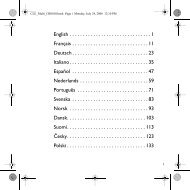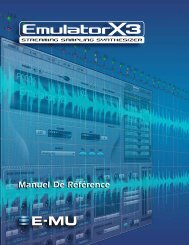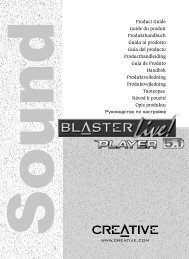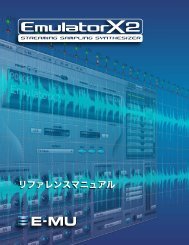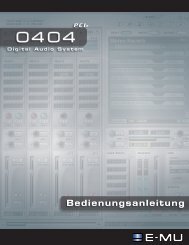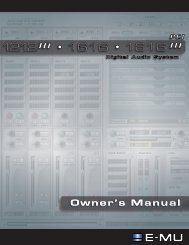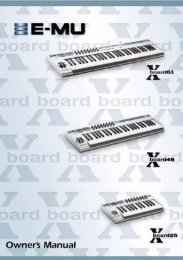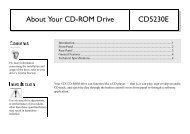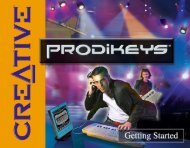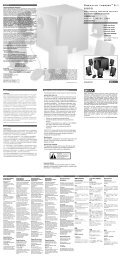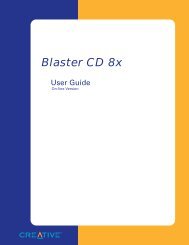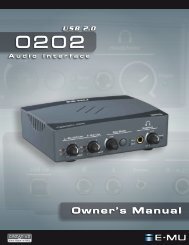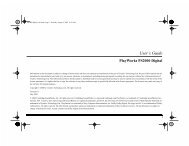You also want an ePaper? Increase the reach of your titles
YUMPU automatically turns print PDFs into web optimized ePapers that Google loves.
Auxiliary Effects & Returns<br />
The section immediately below the TV Screen is where you assign the Auxiliary Effects.<br />
In a traditional mixing console, auxiliary effects sends are used to send part of the signal<br />
to outboard effect devices, then return the effected signal back into the mix using the<br />
effect returns. This is called a sidechain routing because the aux signal takes a detour<br />
through the effects before being summed back into the main mix.<br />
Sidechain effects are usually effects that you might want applied to several channels,<br />
such as reverb. Effects such as EQ and compressors are usually NOT used as sidechain<br />
effects because they can cause unpredictable results when returned to the main bus.<br />
Input<br />
You can also use the Auxiliary Sends as two extra mix buses. By turning the Aux Return<br />
amount all the way down and dropping an Insert Send into the chain, you can send the<br />
Auxiliary bus to any output you wish. See “Insert Section” for more information.‚<br />
Sync/Sample Rate Indicators<br />
The Sync/Sample rate Indicators show the current session’s<br />
sample rate and whether it is internal or slaving to an external<br />
source. The LEDs indicate which sample rate is currently in<br />
effect. If an external source is being used, the Source display<br />
reads “EXTERNAL”.<br />
When slaving to an external master source, the clock may drift<br />
slightly or change dramatically (i.e. abrupt sample rate change<br />
or unplugging of physical master source). PatchMix DSP is<br />
tolerant to minor drifting within the supported rates of 44.1k,<br />
48k, and 96k, but if the sample rate drifts out of this range the<br />
“LOCKED” LED will extinguish.<br />
If the external clock source makes a radical sample rate change from the lower rates of<br />
44.1k/48k to the higher rate of 96k, the hardware automatically mutes audio (to avoid<br />
unpleasant side effects). In addition, a message box will appear telling you that the<br />
sample rate has changed dramatically and that a new session must be created or loaded<br />
to support the new sample rate. If you ignore this alert and continue with the existing<br />
sample rate when you create or load a new session the system un-mutes itself.<br />
Pan<br />
Fader<br />
Mute<br />
Aux<br />
Amt<br />
Input<br />
Aux<br />
Amt<br />
Aux Bus<br />
Sidechain Diagram<br />
(Post-Fader Aux Sends)<br />
Send<br />
Amount<br />
Side<br />
Chain<br />
Main Bus<br />
Return<br />
Amount<br />
Output<br />
4 - The PatchMix DSP Mixer<br />
Main Section<br />
f The Wet/Dry mix<br />
setting in the effect<br />
should normally be set to<br />
100% when the effect is<br />
inserted as a sidechain<br />
effect. This is because the<br />
Aux Return Amount will<br />
control the wet/dry mix.<br />
E-MU Digital Audio System 29




